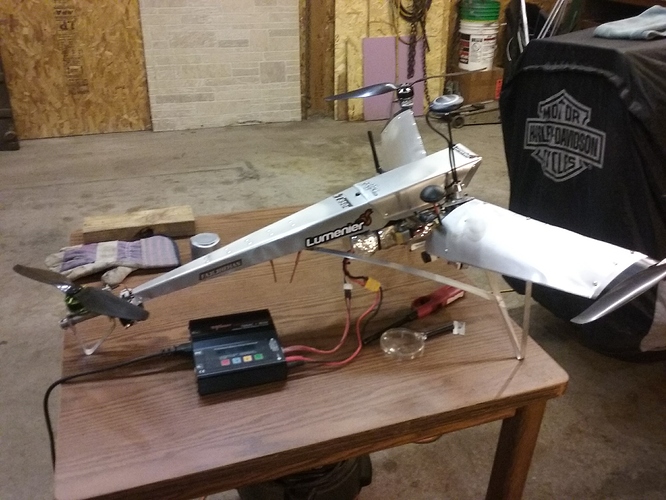20070017929.pdf (348.9 KB)
Found this file while cleaning up my SD card.
Maybe you could find something useful
Well that is what I am looking to find out. I’m now considering a biplane like wing configuration to reduce the impact of the wing on hover power required and get more lift in forward flight. There are a bunch of trade offs to experiment with. I certainly won’t be looking to have the tips go Mach one😳 I think it will be reasonable to maybe get the best range to 20 or 25 m/s and get my specific range up to 60-70 km/kW. And this is looking at an electric powered heli. If I can get those increases for an electric you could expect the same increases for a gas powered heli whic would be even better.
Cool! Thanks for the paper. Are you getting involved with AHS. It is a great organization to be part of. Also a great resource for helicopter research.
Actually…I can’t even remember when&where I got that paper.
Pretty sure I downloaded it while googling for stuff few years ago while deciding what configuration to build (obviously chose a synchropter).
Your design goal could be doable with an electric, Bill. They peak out at much slower speed that gas. I don’t think it would practical to try a compound design with a gas powered heli because they go fast to begin with, 2 hour flight time and extreme range is no problem, and the takeoff weight of a gasser is well below that of an electric design of similar capability.
So the electric platform, in RC, might be where the biggest gains can be found. I got involved with building my 806 gasser while I think about all this. And I intend to experiement with the Trex 600E after the New Year at some point. Just to get a baseline on what thrusters do to the power equation at the 30-35 mph airspeed that 600 electrics like to fly at most efficiently.
Am not convinced that a fixed wing becomes beneficial. Offloading the main rotor with a wing may not provide the stability that is desired. I tried the wing thing with a big Tri once:
The wing may not have been an ideal airfoil - it is a parafoil. But it generates a lot of lift at 20 mph airspeed and the weight of the wing is very, very low. The one thing the wing did for the TriCopter was to move its most efficient airspeed (zero mph, in hover) to 22 mph. I set up the power and props so it hovered at 50% throttle and at 22 mph it was down to 35-36% throttle. But it was a highly unstable aircraft in the wind, despite having plenty of throttle overhead for stabilizing it. And it flies for 50 minutes on a 10A 4S battery. Its useful range is a pathetic 16 miles - not even close to what I can get with a conventional 500-class helicopter cruising at almost twice the speed with the same battery. And going to a 600 heli makes the 500 look like a toy. And a 700 or 800 class trumps the 600.
The main problem is the power system. To my way of thinking, electric is only practical for UAV heli’s up to 700 class. And then you may as well go with piston or turbine power, and a piston 700 will outperform an electric 700 hands down on range and cruise speed.
This is the realization the multirotor guys have come to, as well. They are trying to increase range and flight time of multi’s with gas engines driving generators. But that is another system of cumulative losses - may just just as well go to regular helicopter that is more efficient in the first place, and that can use the gas engine’s power directly without all the conversion steps and associated losses.
In the end, I think that fundamental rule in aviation that I mentioned is going to apply, no matter what you try to do to improve it. I managed to improve the power efficiency of a TriCopter but it is not a practical design due to stability problems and limited speed and range. Single rotor heli’s are the most efficient form of rotary wing aircraft, even more efficient than an autogyro. The brightest engineers on earth have spent millions improving them, and the greatest advancements have been made in aerodynamics, more efficient drives and more efficient blade airfoil designs.
With the cost of gas and the fact it won’t get any cheaper, I would think you’d still be interested in the efficiencies that may be gained. Again we’ll see how it pans out.
Thanks for your insight.
Well, I look at it this way. A 800 gasser burns a little over 2 qts of gas for a one hour flight. Costs less than $2. The batteries to fly a helicopter that size that long cost just south of $1,200. The math on that one is pretty hard to beat ![]()
Founded this topic 7 years later.
Interesting, who and what have built, and what results achieved?
Future Lift Program ended with Bell Valor, new tilt-rotor to substitute V-22. They found it more scalable and able to carry more that Sikorsky Raider
